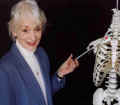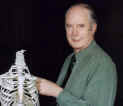 |
 |
 |
Helping You To Achieve ©™

![]()
Helping You To Achieve ©™
|
|
Identify by palpation , surface mark the position and count the pulse of the Common Carotid Artery in the Anterior triangle of the neck on a model with a time limit of one minute.
Objective No 182 - Criteria to be demonstrated. Note : Do not compress the Common Carotid artery against the prominent anterior tubercle of the transverse process of the sixth Cervical Vertebra. Note: The Common Carotid arteries are place on each side of the Trachea (Objective No 199) 1. Draw a vertical line to represent the Median plane from the Jugular notch to the Mentis. 2. Request the model to rotate the Cervical spine and Surface mark the anterior border of Sternomastoid. (Objective No 174) 3. Surface mark the Articular process , Ramus and Body of the Mandible. 4. Surface mark the Sterno-clavicular joint (Objective No 21) 5. Palpate and mark the upper border of the Thyroid Cartlage (Objective No 197) 6. Draw a line from the Sterno-clavicular joint to the depression between the Angle of the Mandible and the Mastoid process. 7. Palpate the upper lateral border of the Thyroid Cartilage. 8. The Common Carotid artery corresponds to the line in step 6. At the level of the upper border of the Thyroid Cartilage, the Common Carotid usually divides into the Internal and External Carotid Arteries.
|
Service ProvisionBronze. Students may take up a ,'Free start up ' package consisting of 100 of the behavioural objectives and criteria based on common questions asked in Living Anatomy. These are available free of charge on this Website. Silver. Students may buy a copy of the book "Surface and Living Anatomy" (ISBN: 0 7234 3261 9) which comes with a CD Rom (Windows PC format) containing 230 objectives which includes the 100 behavioural objectives contained in the Bronze Service. Gold "Helping you to Achieve" Contact Information
|